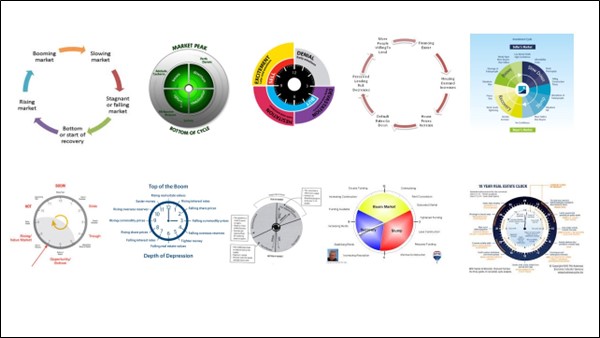The truth about housing market cycles
One expert solemnly warns us about the perils of trying to time the market while another eagerly assures us that the turning point has arrived and it’s time to buy. They can’t both be right, so can we time the market or not?
Human beings hate uncertainty. It fills us with anxiety and worry, so it’s little wonder that many investors rely on indicators that tell us which way property markets are heading.
One of the most popular timing devices is the property market cycle, or property clock. We are often told about which stage of the housing market cycle we are in, or where the property clock is pointing. These tools are seen as being useful for property investors and owners because they appear to give us some certainty about the future.
They claim to predict housing price changes, but have you noticed that there’s so many of them? Property clocks range from four, six, eight, twelve or even eighteen years, and housing market cycles cover suburbs, regions, cities or the entire market. It’s no wonder they point in different directions at the same time.

The reason that these tools are inaccurate is because they operate on the flawed assumption that housing markets always move in regular and predictable cycles and in accordance with immutable laws. The problem with this is that they can’t anticipate significant but unexpected shifts in the causes of housing price changes.
Recent major economic, fiscal and social events were completely unexpected
Yet this is exactly what has occurred in the last few years. We experienced a massive pandemic, which led to unprecedented government responses such as lockdowns and border closures. We are now faced with rates of inflation not seen since the eighties, with many records being broken, such as record low unemployment, record high overseas arrivals, record low rental vacancy rates and a record number of interest rate hikes.
There is simply no way that the housing market cycle or property clock could have anticipated these significant housing demand dynamics when even the most respected and revered economists, analysts and experts failed to do so.
Failing to take unexpected changes into account leads to incorrect forecasts

This is not to say that we can’t predict the future of housing prices or time the market, but it does mean that we need to take those major changes into account when we do.
The main dynamics of property markets are population growth and movement, purchasing power and whether there’s a shortage or surplus of available properties.
Those dynamics dictate which way prices and rents will move, so we need to forget about which stage of the cycle we are about to enter, because right now, the property clock and the housing market cycle haven’t got a clue.